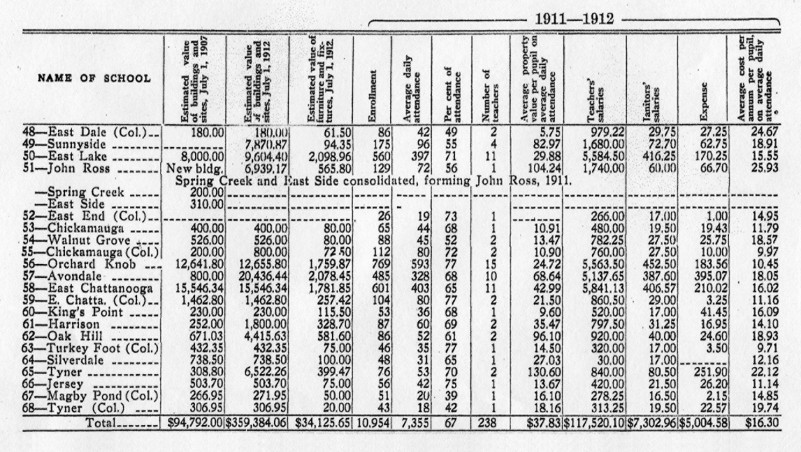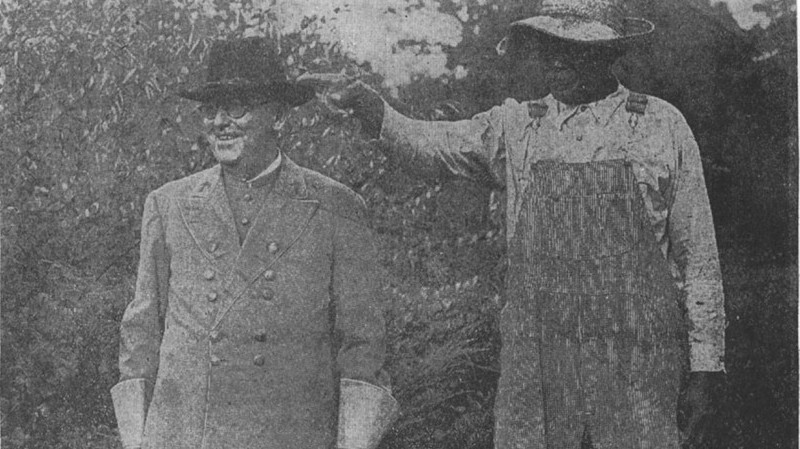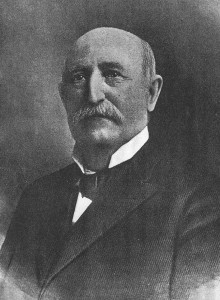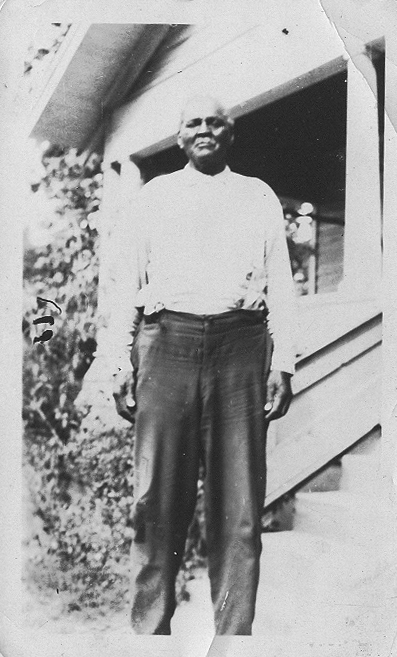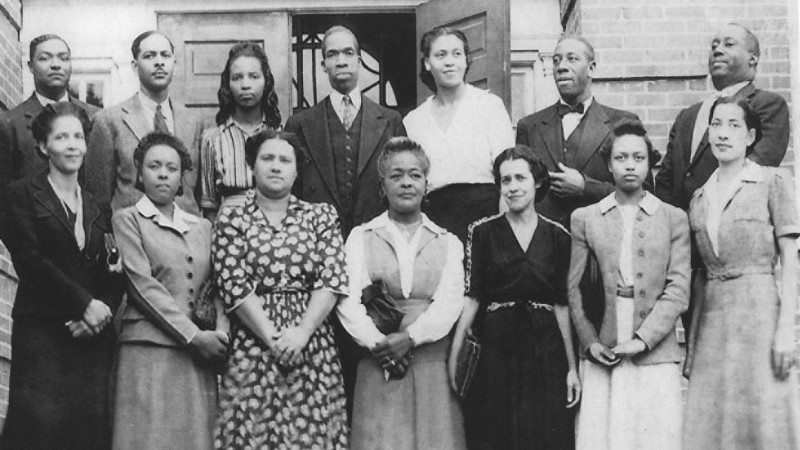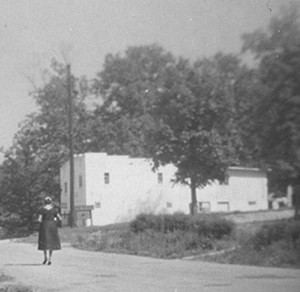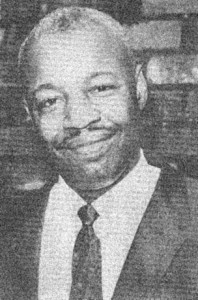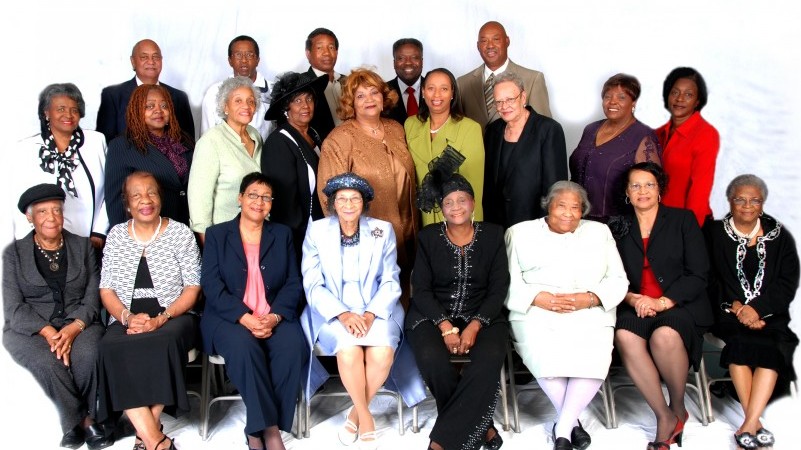THE FORGOTTEN CHILD FUNDRAISING EVENT. SINCERE THANKS TO PARTICIPANTS WHO DONATED TOYS, CLOTHES AND CASH AMOUNTING TO $1,315.00. SPECIAL THANKS TO CHAIRPERSONS: MRS. IRENE CHAPMAN, MRS. BONNIE COOPER AND MRS. DEARTRA MAXWELL WHO DID AN EXCELLENT JOB OF PLANNING FOR THE EVENT. DR. EDNA VARNER MADE A VERY LARGE DONATION IN MEMORY OF HER MOTHER.
WE ALSO WISH TO THANK IVY STRICKLAND, THE SHEPHERD CENTER DIRECTOR FOR DONATING HOT CHOCOLATE FOR THE GROUP.
Shepherd’s 43rd Thanksgiving Dinner Give-a-way

Shepherd Community Action Council will distribute holiday meal as usual on Thanksgiving day. If you know of some one in need of a hot meal, please call the community center @ 423-855.2697.
The Life of W.C. Robinson
Walter Caldwell Robinson, Sr. was the publisher and editor of the Chattanooga Observer.
The contributions made by Walter Caldwell Robinson certainly deserve to be recorded and passed on to future generations. He played a very vital role in the black man’s struggle in his city, state and the nation. Robinson was responsible for lessening the burdens of thousands of black Americans and spent the majority of his life doing what was often thought impossible to get recognition and acceptance for his people as humans and first class citizens.
Walter was born the son of sharecroppers in Larkinsville, Alabama on July 17, 1893. His family lived in Alabama and worked the farm of a white men until Walter was nine years old.
Walter’s parents, Joseph and Elizabeth Robinson decided to move to Chattanooga, Tennessee when he was nine, seeking better employment and educational opportunities for their children. In Chattanooga their economic status improved, but due to segregation and discrimination, their “plight” was yet very bleak.
In spite of these despairing circumstances the children, Floyd, Monroe, Jessie, Rosa, Fannie, Amanda and Walter C. Robinson were able to lift themselves to a higher level of participation in a tightly segregated society.
Robinson showed signs of a businessman and leader at an early age. At age 11, he secured employment in a foundry and by age 16 was operating a laundry business of his own.
Walter Robinson married one of his neighbors and classmate, Cora Adair. To this marriage was born seven children: Evelyn, Marian, Walter Jr. ,Jessell, Alma Lee, Camille and Lucille.
Religion was an important aspect of a black man’s life during this period in Chattanooga, Tennessee. Therefore Walter, Cora and their children were very active members of the Second Missionary Baptist Church. Robinson became President of the Baptist Young People’s Union soon after joining the church in his youth.
At age 21, he became a Trustee of his church. Robinson was an asset to the church because he was able to influence outstanding ministers to accept the pastor-ship of the church when the church was without a minister and after becoming a politician, he was able to raise large sums of money for religious undertakings by asking wealthy whites that he had come in contact with for donations.
Walter began attending the meetings of his Fourth (4th) Ward. Because of the interest he exhibited in ward, local and national politics and his leadership ability, he was elected Chairman of this ward defeating Hiram Tyree who had been Ward Leader for many years. Walter was very successful in creating interest and participation among black citizens.
In a short while Walter’s influence spread throughout Chattanooga and Hamilton County because he established the Colored Voters League of Greater Chattanooga for the purpose of getting recognition for blacks through a united group.
In 1926, Robinson was selected to conduct a campaign tour of Northern and Northwestern states by the National Republican Executive Committee. In his addresses he encouraged blacks to support the Republican candidates for President Vice President and for congress because he felt that this was the best avenue for ending segregation and discrimination.
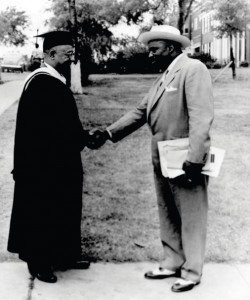
Because of his political involvements, he was chosen to be an alternate delegate to the Republican National Convention in Kansas City, Missouri for the first time in 1928. Thereafter he was an alternate delegate at each national Republican Convention until his health failed in 1963.
H. D. Huffacker was supported by Walter Robinson and the Colored Voters League of Greater Chattanooga for the position of Commissioner of Education in 1927. Huffacker was elected and once in office gave Robinson a job as a Truant Officer for the Chattanooga Public School System. He was responsible for seeing that black boys and girls would attend school, but because of his power and leadership ability he was given the responsibility of suggesting blacks to be hired as teachers, janitors and in other departments of the city. Robinson worked in this capacity until a candidate that he opposed was elected Commissioner of Education in 1935.
Upon resigning as a truant officer in 1935, Robinson began working fulltime for the success of his newspaper business which he started in 1933. This newspaper (The Chattanooga Observer) was initiated for the purpose of expressing his views to benefit the Republican Party, and to defeat candidates in local elections who Robinson felt were not the best candidates for the good of the black citizens and for the purpose of enlightening and uniting the black citizens of the Chattanooga area.
Robinson was continually elected Chairman of the Fourth Ward until Urban Renewal split the ward in 1959. He was also continually elected Chairman of the Colored Voters League of Greater Chattanooga until his death. His newspaper a 35 year venture was published from 1933 until his death in 1968.
Walter Caldwell Robinson was a black man who possessed an unusual propensity for achievement. He emerged as a leader in his community and through the power that he gained, organized the masses of blacks and realized many achievements. He was successful in securing jobs for his followers, as well as recognition and representation in politics, and spent the majority of his life striving to help blacks attain power and first class citizenship.
The period in which Robinson struggled was indeed challenging. The masses of black people during the 1920’s – 1960’s in Chattanooga, Tennessee were of the lowest socio-economic status and possessed little educational training. Robinson organized Blacks and spoke with power to whites because of his support from the black masses. He printed in his newspaper evils that were placed on Blacks by Whites and openly fought discrimination, segregation and prejudice during a period when intimidation, that would lead to lynching, was about as common as prayer meetings and the Ku Klux Klan was as revered by whites in the South as a religion.
The Beginnings Of A Community That Survives
THE BEGINNINGS OF A COMMUNITY THAT SURVIVES
The Shepherd Community is named for Judge Lewis Shepherd who was the son of one of the largest slaveholders in Hamilton County. Lewis’ father, Col. Lewis Shepherd owned 24 slaves and thousands of acres in Hickory Valley just 2 miles from what is now Shepherd. The farm “Overseer” was John Walker. Col. Shepherd died in 1856 when he was 60 years old. His son Lewis having been born in 1846 when James K. Polk was president was then only 10 years old. The widow Shepherd had a $150,000 estate at the start of the Civil War.
Lewis Shepherd studied at Aldehoff’s Institute and at Burritt College in Van Buren County. When he was 15, he enlisted with the Confederate forces and fought throughout the war. He was with Gen. Nathan Bedford Forrest at the Battle of Chickamauga and with Gen. Joe Wheeler in his cavalry raids in Middle Tennessee. He was finally captured and spent a year in prison at Camp Morton at Indianapolis. Following his exchange in February of 1865, Shepherd joined the cavalry of Gen. J. C. Vaughn in Southwestern Virginia. After the surrender at Appomattox, he was with the escort of President Jefferson Davis until the cavalry was disbanded in Washington, GA in May of 1865.
When Lewis and Lilah moved to their new home in Chattanooga, they brought with them a former slave, Thad Rankin. Thad had been a slave in Dunlap, Tennessee which is located about 30 miles from Chattanooga across Signal Mountain. His master was Squire Bill Rankin. (Slaves took the last names of their masters.) Thad was 11 years old when the Civil War started. After the war he went to work for Alexander and Sarah Pope in Sequatchie County. They were the parents of Lilah Pope Shepherd, the wife of Judge Lewis Shepherd. Thad was brought to what became known as Shepherd by the couple. He was to be a servant and to engage in sharecropping. He worked for the Shepherds for over 60 years.
Thad was a proud stately looking gentleman who was 6’ 4” tall. He was treated kindly by the Shepherds and was the only Black allowed to fish from the Shepherd’s family pond without permission. They referred to him as “Uncle Thad” in later years. This was a term that was used by whites during those days to show respect or to suggest favor to Blacks.
When Thad was 89 years old, he was asked by a newspaper writer “Where were you on the day of the Battle of Chickamauga?” (He was
a boy of 14 at the time of the Chickamauga battles.)
“I was at Taylor’s Ridge near Dunlap. I was refugeed with all the other slaves of my master, Capt. Will Rankin of Dunlap until he could “whop” the Yankees. You know everything the Yankees passed was freed and “Marster” was keepin’ us outa the way.” We wuz about 30 miles from the battle, but we shore could hear it and we could feel the ground shake. Early at daybreak-the battle, you know was fought on Sunday-those big ole guns talked as regular as a hog a-walking and kept it up all the time between sunup and dark. About 3 or 4 o’clock in the afternoon, all the smoke started to settlin’ so thick you could hardly see your hand in front of your face. The light muskets sounded like kindlin’ a-crackin’. The refugee journey lasted as far south as Atlanta before the end of the war and emancipation.”
Thad recalled that the old horse he was driving for his mistress that eventful September Sunday was named “Bushwhacker” and that he fed him “hard tack” for the lack of oats on the family’s weary jaunt toward the South, ever fearful that the Yankees were coming and capture was near. He recalled that “Squire Rankin” brought them all the way back to the old home place at Dunlap before they were freed.
Thad continued to work on a farm after his freedom. After his marriage in 1877, he began serving the Lewis Shepherds when they lived in Sequatchie Valley and followed them when they moved to Chattanooga.
Thad was born on April 17, 1849 and died in 1951 at the age of 102. He is buried in the Shepherd Citizens Cemetery.
Education in Shepherd
Chickamauga School
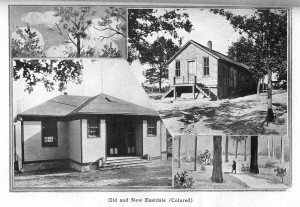
Chickamauga School was established in 1871 during the Reconstruction period. The Reconstruction period covers the first 12 years immediately following the end of the Civil War and the abolition of slavery (1865- 1877). The written history of Pilgrim Rock Baptist Church which was established in 1885, mentions that church services were held at the school until a church could be built. This confirms that a school building existed and that teaching and learning were happening prior to 1885. The first Chickamauga School building would have been a crude, unpainted structure with a wood/coal burning heater or fireplace for use during the winter months. The toilet facilities were outside. The first Chickamauga School building probably looked very similar to the first Eastdale School for colored pictured at top right of the above photo. The Eastdale School building at lower left was constructed in 1912. Originally there was one teacher who would have been a White carpetbagger (a carpetbagger was a person from the north who came south to help Blacks prepare for life as free citizens.) The first teachers of Blacks in the south were White because there were no Blacks who were prepared to teach when slavery ended. This was the case because during the slave era, it was illegal to teach a slave to read and write. As Blacks became literate, they assumed the teaching jobs in Black schools. For many years, teachers were not required to have college degrees. The only requirement was to pass a written examination. Miss Marjorie Strickland did not have a degree when she started teaching. Each summer she would enroll in classes at Tennessee A & I State University until she completed the requirements for a degree. She actually continued her education and eventually earned a Masters degree. Miss Strickland wrote in 1976 that when she started teaching, the salary range was from $20.00 to $40.00 per month for a few months. Mrs. Evelyn Harden mentioned that she did have a degree from Tennessee A & I State University when she first started teaching. She is 14 years younger than Miss Strickland and was very excited when she received her first check in the amount of $95.00 for a month’s work. There was a janitor who would clean the building and make fires before the teachers and students would arrive each day. The last janitor at the second site was Mrs. Nina Frazier. Teachers and older boys in the class would keep the fire going during the day.
Booker T. Washington School
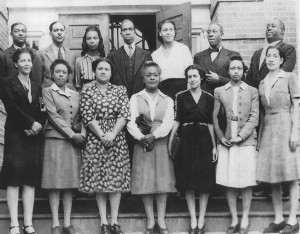
The Booker T. Washington School was a consolidation of three schools: Turkey Foot, Magby Pond and Tyner. The new school was opened in 1924 with Mr. J. T. Swann, a former teacher at Chickamauga and Soddy Grammar Schools serving as principal. The school embraced grades 1 – 8, with grades being added as the school progressed to the 11th grade. An addition was made to the school in 1930 at which time Mr. J. L. Espey was named principal. Booker T. Washington School was the only high school in the Hamilton County School System that African-American children could attend at that time. Many of the concepts of a regular high school curriculum were being carried out when two buildings were destroyed by fire. The Booker T. Washington School was rebuilt and opened in the fall of 1935 with Mr. T.D. Upshaw, Jr. as principal. The school would now include grades 1 – 12. In addition to the usual high school courses for which students received credit from the state, there were course offerings based of the philosophy of Booker T. Washington, the man. Booker T. Washington as a leader of Blacks during his time encouraged Blacks to train for jobs that Whites would accept them for. Examples of such jobs that the Booker T. Washington School included chunks of time in the school day training for were: housemaids, cooks, farmers and construction workers. Every high school student selected one of the above mentioned areas as sort of a major and received hands-on training during grades 9 – 12. To read more about the Shepherd Community, click here to request the History of Shepherd Community 1877 – 2011.
Black Businesses of Shepherd
Beginning in the 1940’s, Black-owned businesses emerged in Shepherd. The businesses were varied and met the needs of the residents. Many of the businesses no longer exist but for a time, they thrived and proved to be lucrative for the owners. A majority of the businesses were located in “Downtown Shepherd” on Shepherd Road and what is now Tuskegee Blvd. A few of the businesses continue and are doing well. Some of the businesses perform services that are desired by residents of the community and citizens from throughout the city.
Following is a listing of businesses that have existed or continue to operate in Shepherd. Businesses that are still in existence are in BOLD type: Grand Finale Events & Décor, Sanders Lock & Key, Sax’s Collision And Repair Shop, Simmons’ Car Wash & Washeteria, Sister’s Catering, Smith’s Red Hot Bar- B- Que/Airport Pizza, Smith’s Service Center, The Rock House, Tom Jenkins Dry Cleaner, Whitehead’s Barber Shop, Willie’s Truck & Tractor Shop, Alert Plumbing, A & M Grocery, Bessie Hines’ Beauty Shop, Brown’s Restaurant, Cabe Petty’s Store, Carrie Johnson’s Thrift Shop, Delta Brodgen Enterprises: (beauty shop, barber shop, restaurant and designer wheels), Fountain of Hope Community Child Care, James Hines’ Barber Shop, James Smith’s Construction Company, Inc., Jimmy’s Service Station, J & B Club (Later, The Smartt Spot), Lawrence’s Grocery, Mack King’s Cleaner,s Mary Austin’s Beauty Shop, Right Way Inn # 1 (Goolsby’s Store), Right Way Inn #2 (Behind the Moon), Roberts’ Hardware Store & Roberts’ Grocery Store.
“Behind The Moon”
In 1952, George W. Maffett, Sr. acquired a property that consisted of three lots on Fisk Avenue. On the property was a house that the builder, Noland Heard lived in when it was first constructed. Also on the property was a two-story building and in the rear of the two-story building were eight cabins. In the downstairs area of the two-story building, George operated a confectionery. The upstairs area served as a night club that became popular throughout Black Chattanooga and beyond. The club was known as “Behind the Moon.” “Behind the Moon” featured bands and other entertainment acts such as fire eaters that drew crowds from miles around. Believe it or not, entertainers who were traveling the “Chitterlin Circuit” at the time and performed in Shepherd at “Behind the Moon” included James Brown and Little Richard. The house on the property was referred to as the “Guest House.” The entertainers stayed there when performing at “Behind the Moon.” The eight cabins served as motel rooms. They could be rented by the week, day or by the hour.
Community Associations of Shepherd and Achievements
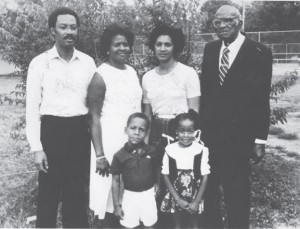
Left to Right Rear: “Malcolm Walker, Armelia Williams, Dixie Ballou and Emory Henderson.
As we look back on community organizations that have existed in the Shepherd Community, we realize that there have been three distinct community associations. We have minutes of the first association dating back to the early 1920’s. The name of the first organization was the “Shepherd Community Club.” The president was Rev. J. W. Ridley and later, Mr. Emery G. Henderson. The secretary was Mrs. Mary Strickland and the chaplain was Rev. W.G. Strickland.
The Shepherd Community Club functioned at least until the late 1930’s. During late 1930’s and the early l940’s there was an influx of newcomers to Shepherd as a result of an ad campaign for the selling of lots for homes. The lots were sold first by Realty Trust Corporation and later by Washington Park Inc., a corporation. For example, on November 4, 1936, lots were deeded to Theodore Watley, F. M. Storey, Otis Jackson, Jerry Malone, Susie Mae Brown and Richard Swaing. By the early 1950’s a new community association surfaced. The name of the new community association was the “Shepherd Civic Club.” Mr. Emery G. Henderson continued to be a leader in the second organization along with newcomers including Raymond Hudson, Sr., Florence Goolsby Owens, Sally Moore, Emmitt Henderson, Wiley and Ethel Simmons, Sr. and Robert L. Marsh. The third community association was initiated in 1967 and continues to the present. Organizers of the “Shepherd Community Action Council” included again: Mr. Emery G. Henderson, Bro. George Carson, Bro. Rufus Williams, T. H. Cravens, Florence Goolsby Owens, Emma Cravens, Rose Palmer, Mildred Cooke, Armelia Williams, Sally Moore, Jean Strickland, Dixie Ballou, Barbara Lipkins, Hanson and Arlena Smith,
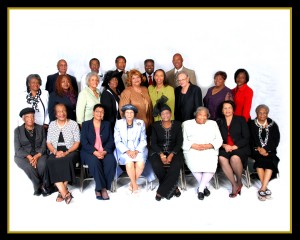
Rev. Samuel and Velma Jenkins, and Annie Presley. Malcolm Walker became involved in 1969 shortly after finishing college. Mr. Emery Henderson was a leader in all three of the community associations of Shepherd beginning in the early 1920’s and served until his death on February 23, 1987 at the age of 92. He was proud of his community and worked very hard to provide improvements by organizing the people and involving elected officials and people of influence in making resources available.
